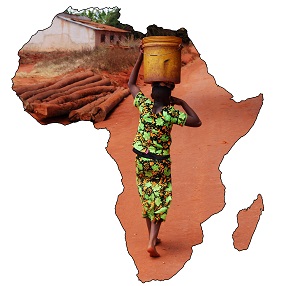Damage limitation for drought in Africa

Related topics
Agriculture & Forestry Environment & climate action Innovation Societal Challenges Belgium France Germany Netherlands Portugal Spain United Kingdom Environment Egypt Kenya Morocco Mozambique South Africa Botswana Sudandate: 22/04/2015
Project: Improved Drought Early Warning and FORec...
acronym: DEWFORA
See also: CORDIS
Unlike floods or fires, droughts develop slowly. The onset of a drought is, however, difficult to detect, which often results in a reactive approach to managing their impacts, rather than a proactive approach that would allow time to limit those impacts, protecting food and water supplies, the environment and industry.
The complexity of the water cycle and weather make drought forecasting challenging, while predictions often focus on changes to weather rather than impacts on people. This means that vulnerable communities in Africa often don’t receive the information they need to stop a drought becoming a disaster.
The EU-funded DEWFORA project addressed this through a drought-management framework that connects the available science on drought forecasting to practical policies for affected groups. It supported this framework with an online drought prediction tool for Africa, and with local training to build capacity in forecasting and limit the effects of drought.
Project coordinator Micha Werner is a senior hydrologist at water research institute Deltares, the lead project partner. He says: “The project aimed to inform policy rather than set it. DEWFORA combined science with social studies – it is perhaps one of the first such approaches to assessing drought vulnerability.”
By building capacity to manage the effects of a drought, the project hopes to contribute to improving people’s health, security and prosperity – and prevent the starvation, political tension and damage associated with droughts in different parts of Africa.
The approach could help managers of water resources in Europe and other continents as well as in Africa, says Werner. “Society could benefit greatly from being able to respond to drought warnings in a way that is useful to people and stakeholders.”
Prioritising prevention; sharing results
Werner explains that a survey by the team at the beginning of the project found over 150 Africa-focused drought warning systems worldwide. However, the information produced is very technical and often simply does not reach the people at risk from a drought.
To communicate data better, the team’s drought-management framework links predictions to local geography and socio-economic conditions. A strong emphasis is on giving stakeholders enough warning to limit a drought’s impact. For example, if farmers are warned about a drought before the planting season, they can plant drought-resistant crops.
Four questions are at the heart of the framework: What science is available on a possible drought? How is society affected by drought and what is its ability to cope? How can science be used to set practical policies? How can society benefit from the forecast?
Comparisons of available forecasts against actual droughts highlighted strengths and weaknesses in current methods. With these results, the 19-partner project built a map-based pilot system for monitoring and forecasting water in near real time across the whole of Africa – now available on the Joint Research Centre website.
Four case studies in different climates (The Eastern Nile, Limpopo, Oum Er Rbia and Niger basins) showed the potential with which accurate forecasts of drought conditions could be made up to a season in advance. At a pan-African level, the project predicted how climate change might affect longer term water supply, highlighting strong changes in various regions.
Sharing their knowledge with meteorologists and hydrologists from African institutions, the project’s partners held workshops in several countries in Africa, including Egypt, Kenya, South Africa and Mali. From these workshops, they developed a free e-learning course on drought early warning and forecasting, available on the DEWFORA website. Video, online and printed material completed the dissemination.
Werner says: “The project established good links between our African partners and other organisations, communities and scientists. It also generated useful information that can feed into a worldwide drought information system that is being developed.”
Team members are exploring how to continue their work, in particular how communities can use technologies and water management methodologies to respond to drought forecasts and help reduce drought impacts.
